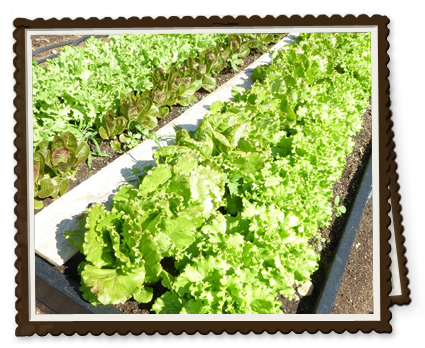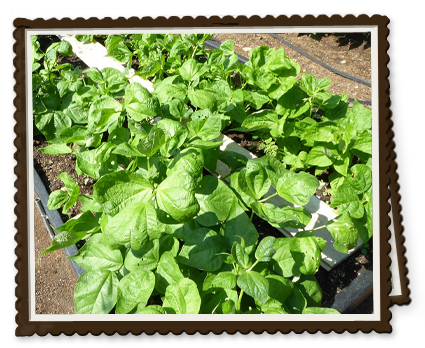
Seeds of Change
Vegetable Gardening
Vegetable Garden Planning 101
The winter months are made brighter by garden planning! This is the time to get your seed, bush, and tree catalogues and set about deciding what you would like to plant, grow, and perhaps EAT! The White Flower Farm in Litchfield has a lovely catalog, as does Johnny’s Selected Seeds, Territorial Seed Company, Burpee’s, Seed Saver’s, and Harris Seeds. And of course, you can browse the displays at Home Depot and Lowes.
Needless to say, you should get vegetable seeds for the stuff you like to eat. Unless you can have a big patch, I would stay away from sweet corn, however, as it takes up a huge amount of room and you only get max three ears to the plant. Trailing winter squashes like Butternut, as well as pumpkins and gourds also take up a lot of room so they need to be planted where they will not over-run everything else. Summer squash like zucchini, is usually a bush variety so more containable. (Winter squash has a hard skin, and stores well into the winter, while summer squashes have a thin skin and have to be eaten soon after picking.)
Some vegetable need to be put in early like radishes and salad greens because they “bolt” or go to seed in hot weather. There are MANY varieties of lettuce other than “iceberg” which was the familiar lettuce of my youth and was developed because it ships well. Iceberg is actually one of the least nutritious varieties. It is a “head” lettuce and takes longer to mature. Loose-leaf lettuces, like butter lettuce, red-leaved lettuce, and curly leaved lettuces on the other hand, can be harvested earlier. And then there is also Frisee, which is in the endive family.
Tomatoes are usually purchased as plants, unless you can start them under lights. Tomatoes are basically a vine, but now come as compact or “determinant” types and more trailing or “indeterminate” types. The more trailing types need more room and need to be pinched and trellised to make them more sturdy and upright, whereas the compact types can be grown in containers on your deck or patio. Eggplant and sweet and hot peppers are also usually purchased as plants unless you start them under lights, and onions are purchased as tiny bare root plants called “sets”.
Potatoes come as “seed potatoes.” You cut them up, leaving one “eye” or bud on each piece, and bury them in the ground, but not too deep. You can even grow potatoes in deep, wet, straw! Sweet potatoes are entirely different. These you can buy as plants – I got mine at Home Depot one year. They make a trailing vine. You may notice that potatoes, tomatoes, and eggplants all have a similar flower.They are actually all related as they are edible members of the nightshade family. Deadly Nightshade, however, has a much higher content of the “Belladonna” or “beautiful lady” alkaloids, so named because in earlier times women took a bit of it to make the pupils of their eyes open wider which was deemed more beautiful. However, Deadly Nightshade is deadly. Ingesting even 2-4 berries can kill a child!

Vegetable Gardening Through the Season
Vegetable gardening for the serious gardener is not one and done. Lettuce heads get eaten (hopefully by you, your family, guest and friends and not by gophers), and in hot weather will bolt and go to seed. So not only do we plant lettuce in a shadier portion of the garden, but we plant sequentially, so we can have continual salad. When one row gets eaten, its time to put in more seeds! Or we mix it up and plant lettuce in between something else.
String beans, likewise. A row will mature and bear for a couple of weeks, but then you need to have another row or so coming along. Peas will be gone and radishes will bolt as soon as the weather gets warm, so eat them quickly and put that second row of beans in their place. And, beans are nitrogen-fixing, as are all legumes, so they actually make their own fertilizer!
Green onions will also get used so you can put something else in their place. Root vegetables like beets and carrots take longer to mature (and also keep for quite a while in the frig or “root cellar.”) Likewise, potatoes, but potatoes are especially yummy when dug small and early, as “new potatoes,” and served lightly boiled with butter and lots of dill (another thing you should have in your garden.) I am also particularly fond of parsnips, immortalized by the poet, Ogden Nash, but they are more persnickety and are a bit difficult to germinate.
The Parsnip
The parsnip, children, I repeat
Is simply an anemic beet.
Some people call the parsnip edible;
Myself, I find this claim incredible.
Actually, par-boiled and fried in butter they are absolutely scrumptious and super in stews as well!
You have to eat your summer squash before it turns into baseball bats. It’s much better when young and tender. Your peppers will probably be done by September, but your tomatoes should keep producing until frost kills the plants, and if you pick the green ones before they freeze they are delicious sliced, breaded and fried! Onions should be pulled then and can be hung up and dried, and Kale will persist until long after frost. You will be picking your winter squash after the leaves have died. And Leeks like to be frozen a bit before they get really sweet.
